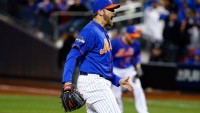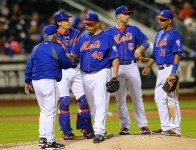Yoenis Cespedes
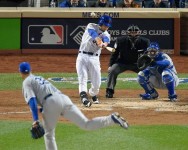
There are many out there calling the Mets offseason a success so far. Personally, I don’t see it. Yes, I know the offseason isn’t over, but we’re also pretty sure the Mets aren’t replacing Yoenis Cespedes‘ bat.
Overall, the Mets as constituted now are not better than the team that lost the World Series. Here was the lineup for the team that just lost the World Series, with their respective WAR from the 2015 season:
- Curtis Granderson 5.1
- David Wright 0.5
- Daniel Murphy 1.4
- Yoenis Cespedes 6.3
- Lucas Duda 3.0
- Travis d’Arnaud 1.7
- Michael Conforto 2.1
- Wilmer Flores 0.8
Combined 20.9
If the Mets make no other additions this offseason, which still remains a possibility, here’s the Mets 2016 starting lineup with the player’s WAR from last year.
- Curtis Granderson 5.1
- Neil Walker 2.4
- David Wright 0.5
- Lucas Duda 3.0
- Asdrubal Cabrera 1.7
- Michael Conforto 2.1
- Travis d’Arnaud 1.7
- Juan Lagares 0.6
Combined 17.1
On paper, barring any further additions the 2016 starting lineup is worse than the 2015 World Series team. This is despite how more “athletic” the Mets are in the middle infield. In response, the argument is the Mets are now deeper. Are they? Let’s compare the 2015 and 2016 benches.
Before comparing, it should be noted I’m going to use a traditional 13 position players and 12 pitchers split. That means I will have to eliminate once bench player from the 2015 Mets. I’m choosing to remove Kirk Nieuwenhuis from the roster as he was called up in September.
I’m also dropping Juan Uribe from the 2015 roster. When building a team, you’re going to want a backup shortstop. Uribe doesn’t fit the bill. Since Ruben Tejada was injured, and thus unavailable, I’m replacing him with Matt Reynolds, whom I’m assigning a 0.0 WAR since he didn’t play at all last year.
Here’s the modified 2015 World Series bench:
- Kevin Plawecki 0.9
- Matt Reynolds 0.0
- Michael Cuddyer 0.5
- Kelly Johnson 0.3
- Juan Lagares 0.6
Combined 2.3
Here’s the current bench, which would be subject to change with a free agent signing:
- Kevin Plawecki 0.9
- Wilmer Flores 0.8
- Ruben Tejada -0.1
- Kirk Nieuwenhuis 0.7
- Eric Campbell -0.5
Combined 1.8
Now to be fair, the 2016 bench will mostly likely not have Eric Campbell on the Opening Day roster. Eliminating his -0.5 would balance out these benches.
Here’s one big problem, if not Campbell then who? Let’s assume Mets fans get their way, and the team signs Denard Span. Span had a 0.7 WAR last year. Yes, that’s the same as Kirk’s. Slotting Span into the everyday lineup has this effect:
- Starting Lineup WAR increased from 17.1 to 17.2
- Bench WAR decreased from 1.8 to 1.7
- Eric Campbell or Kirk Nieuwenhuis is still on the Opening Day roster
Now, first counter-argument will be the offseason isn’t over, so the Mets can still make additional moves. Currently, without any other moves, the Mets payroll stands around $105.7 million. Let’s assume for arguments sake, the Mets have around $10 million to spend. With that $10 million, the Mets are looking to add a reliever, a CF, and another bat.
Span is estimated to receive about $12 million a year. Well, that blows the whole budget. Even assuming the Mets could get Span for less, they’re not going to have enough money for a reliever and another bat after that. So again, chances are either Campbell or Kirk will be in the Opening Day roster.
The next counter-argument is last year’s WAR doesn’t account for full years from Wright, d’Arnaud, or Conforto. This point-of-view is acceptable. However, you also have to acknowledge Granderson may be due for a regression at 35 years of age with a repaired torn ligament in this thumb. Also, based upon their histories, you can’t rely on Wright or d’Arnaud to last a full season. Essentially, while you can expect some players to improve or play more often, you can expect others to regress and/or suffer injuries.
Overall, the Mets still might be able to win the NL East and return to the playoffs in 2016. They will do so because of their pitching. However, objectively speaking, you have to admit the 2016 Mets are and will be weaker than the 2015 Mets team that lost the World Series.
That is unacceptable.
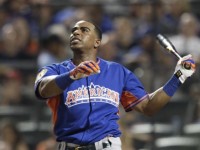
Yesterday was an extraordinary day. Putting your political leanings aside, two Cuban-American U.S. Senators, Ted Cruz and Marco Rubio, took the stage to participate in the GOP Primary Debate. To get to this point, their ancestors had to flee an oppressive Communist government to find a better life for themselves and future generations. Sens. Cruz & Rubio are the embodiment of those hopes and dreams.
Yesterday also marked the day that Cuban born baseball players had the opportunity to return home and see their families for the first time in years. Jose Abreu, Brayan Pena, Alexei Ramirez, and Yasiel Puig got that opportunity because they returned to Cuba as part of MLB’s trip to promote the game. The Cubsn defectors left to seek a better life leaving behind parents, siblings, spouses, and yes, even children. Abreu has been away from his son for two and a half years.
Essentially, Abreu left when his son was a little older than my son is now. I have trouble leaving him in the morning when I go to work. I can’t imagine leaving him knowing that I was most likely leaving him forever. I can’t imagine a situation so dire that I could actually entertain the idea let alone follow through with it.
More so, I can’t imagine how MLB didn’t bring along all current and former Cubsn born players. I don’t know how many of them were given the opportunity. I don’t know how many declined. I think of the former Mets who did not go or get a chance to go. Yoenis Cespedes still has a son in Cuba, but he is staying in the U.S. Whatever the reason, he might’ve missed the last chance he’ll ever get to see his son again. That thought is just incredibly depressing.
MLB is making this trip in part to determine the future of Cuban baseball, and what, if any, role MLB will have in said future. MLB makes this trip while Jose Fernandez seeks the opportunity to play in the U.S. after defecting from Cuba. He defected after being banned from playing for a year because they knew he wanted to defect. It’s an odd situation to say the least.
We also don’t know what opportunities Cuban baseball players will have in the future. We don’t know if these defectors like Cespedes will be able to return to see their families. We don’t know if players like Cespedes missed the chance of a lifetime. On a lesser note, we don’t know if these players will be permitted to play for Cuba in the WBC.
While MLB should be commended for creating this opportunity for the Cuban born players, it should be noted there’s more to do. They need to negotiate a posting system like there is with the Japanese Leagues. This may prevent the harrowing tales we hear from players after their defection. They should be setting up a way for their current a former players the right to see their families. Every year, MLB sends a contingent of players to Japan to play in an exhibition series.
You may not think MLB has that power. I respectfully disagree. This is the league that had a home and home between the Cuban National team and the Baltimore Orioles. This was before President Obama made any steps to formalize relations. Imagine what MLB could do now. It’s their duty and responsibility to help their players and their families.
In any event, I’m happy these families were reunited. I’m hopeful for better treatment of Cuban players and their families. Something has got to change. MLB could choose to be on the forefront of this change, or they could sit around and wait for someone else to do it.
With that said, I’m going to come home tonight and tuck my son into bed tonight. No government can stop me from doing that. We live in a place where I don’t have to make that choice. We live in a country where the children of immigrants could possibly one day become the President.
For players like Jose Abreu, he only got December 14, 2015 to do that. We still don’t know if that’s the last time he ever sees his son. Here’s hoping MLB steps up and helps change that.
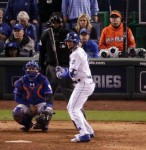
To this day, I will never forget the feeling. I was sitting in the back row of Section 126 with my son on my lap. Yoenis Cespedes stepped up to the plate, and I thought for a moment that it was a bad idea to sit there.
The thing is when Cespedes gets a hold of one, he gets a hold of one. They are line drive rockets out of the ballpark. After seeing him this season and in the Homerun Derby, can you honestly tell me there is anywhere in the ballpark that is truly safe from a ball off the bat like a player like that? So I sat there nervously as Cespedes struck out.
Now, I like that area because bathrooms are nearby, and it’s close to the FanFest section. Also, it’s an area of the park where you shouldn’t have to worry about batted balls. In fact the closest there ever was to a problem was when someone tried to push past me while I was holding my son, while standing in front of my seat, so they could catch a t-shirt from the presumably now defunct Pepsi Patrol. Note, I may or may not have had a hand in that person not catching the t-shirt.
In any event, I thought of the Cespedes at bat when MLB announced their new netting guidelines. I thought about how I was nervous that day when in reality there wasn’t any real reason to be. I then remembered why I was nervous. I was actually paying attention to the game.
First and foremost, let me state that I don’t want to see anyone get hurt at a game. I also do acknowledge that a screaming line drive could harm even the most alert fan. With that said, I believe the netting guidelines is a cosmetic and unnecessary gesture in response to a public outcry for extended netting. Why is it unnecessary? Well because teams like the Mets were already in compliance:
The Mets say the reason they're not changing netting at Citi Field is because it's already in compliance in going to edge of dugouts.
— Adam Rubin (@AdamRubinMedia) December 9, 2015
Also, there’s something lost in all of this. There’s a certain level of responsibility when you sit in those seats. The first is you shouldn’t sit there if you’re not going to pay attention. Baseball is an interesting game. You should watch it. If you’re not, in most ballparks, you have terrific club access. If you’re not going to watch the game, why not ignore it from a climate controlled room with a wait staff?
The next responsibility is you don’t sit kids there. It’s too close. Way too close for their reaction time. Furthermore, kids are always doing a million things at once. They’re eating hot dogs, asking to go to the bathroom, and watching the game. They’re easily distracted, and they’re distracting you. If you have the money to sit in these seats, you have the money to sit pretty much anywhere else. Go sit in the right section with your kids and come back when they’re older.
I honestly can’t think of a good solution to the batted ball problem than people paying attention and/or sitting in an area where it’s not an issue. The game starts with a warning about batted balls in the stands. Why make it more frequent than that? Think about it logically? If the person isn’t paying attention to anybody, why would this announcement reappeared on occasion cause this person to start paying attention? They’re not going to hear it because they weren’t paying attention in the first place.
The next is assigning security to watch out for people in hazardous areas to find people not paying attention. The gist is security could warn the person and/or move them to another section. This is a non-starter for me. Because someone is too good to pay attention to a game, a security guard is supposed to be wandering around and watching people. While this is happening, there’s a game on the field. The security guard is now at risk. He/she is walking the aisles making sure people are paying attention. Batted ball comes his/her way, and there is is sufficient time to spot the ball and move.
The other suggestions is the Japanese Leagues netting from foul pole to foul poul. I don’t like that either. First, one of the charms of being in that area is the ability to get an autograph. That goes out the window. The next problem is you’re preventing players from trying to catch a flyball in the stands. It’s always an exciting play. You’ve now taken it out of the game.
I’m sure there are other suggestions too. If they’re suitable to the play on the field and the fan experience, I’m all for it. However, none of the ones I’ve heard so far handle that delicate balance. Again, there’s no substitute for sitting there and paying attention. You’re not supposed to text while driving because it’s dangerous. Don’t text while the game is in play. It’s really that simple.
As for me, I quickly realized my fears were overstated. It happens a lot with parents of young ones. No one hits a ball there. If they ever do, I’ll be prepared because I actually watch the game.

Once Michael Cuddyer‘s retirement was confirmed, seemingly everyone sought out the best way to spend his $12.5 million forfeited salary. The prevailing thought was that the Mets should re-sign Yoenis Cespedes. I do admit for a time being the Mets could’ve better spent their money.
These are interesting and worthwhile discussions, but they also neglect the void Cuddyer leaves behind. I know he was slated to make a lot of money. Money, frankly, that could be better spent elsewhere. Put that aside for a second. That money was already budgeted. Instead, let’s focus on the role Cuddyer was going to play:
- Veteran presence in the clubhouse;
- Solid pinch hitter; and
- Right handed bat against tough lefties.
At a minimum, you knew you could slate him in to give Lucas Duda an occasional day off while having a credible bat and glove at first base. He could take some at bats from Curtis Granderson against lefties. Remember, Granderson has definitive platoon splits, and he will be 35 years old next year. He can also ease the transition of Michael Conforto into his role as an everyday player.
Now, many people will naturally call for Juan Uribe to take his place. It seems like a fit. Uribe was a great addition to the clubhouse, and can spell David Wright at third on occasion. Last year, Uribe was uncomfortable playing first, but he may have more aptitude after having an offseason to prepare for the role. He will also cost much less than $12.5 million.
However, Uribe is not the player Cuddyer is or was. Cuddyer is a career .277/.344/.461 hitter. Last year, Cuddyer hit .259/.309/.391. As a pinch hitter, Cuddyer hits .355/.431/.548. Conversely, Uribe is a career .256/.303/.421 hitter. Last year, he hit .219/.301/.430 with the Mets and .253/.320/.417 overall. As a pinch hitter, Uribe has hit .281/.363/.461.
For the money, sure, you’d probably rather have Uribe. However, that first implies the Mets will reallocate the money (not a given). Second, it ignores the fact that Cuddyer also plays the outfield, which Uribe doesn’t. Lastly, Uribe would be redundant as he would just be signing on to play Wilmer Flores‘ role.
No, to fully replace Cuddyer the Mets need a right handed 1B/OF who can serve as a mentor to the players on the team. Looking at the free agent market that player doesn’t exist. Therefore, finding a replacement for Cuddyer will be next to impossible. The Mets are not a better team after his retirement.
I suppose the biggest testament to the type of player and Cuddyer is is noting that the 2016 Mets are worse off for his retirement.
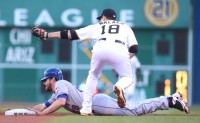
I am reminded of being in the seventh grade. I grew a lot, especially my feet. It must’ve been beyond annoying and expensive for my parents. My mother always insisted on good footwear. My father on the other hand always looked for a deal.
We went to Fayva Shoes (remember that place?). There was some insane sale where if you purchased one shoe, you got the next one half off. The strange thing about this sale was if you got a third it was half-off the half-off price (for example, a $20 sneaker cost $5). Basically, every sneaker after the first one followed this computation.
Anyway, my father made me pick out a shoe that I liked (or hated least). He then literally purchased that sneaker in every half size up to a size 13. His theory was he’d never have to buy me another sneaker again. Plus, he got me a sneaker that cost $0.30. Not an exaggeration. Side note to this story is his plan never would’ve worked as my feet are about a size 14.
Guess how well this worked out? C’mon, we were able to purchase a sneaker for $0.30. They were flimsy sneakers. I was playing football, juked, rolled my ankle, and broke my foot. We may have had a sneaker that cost $0.30, but now there was also medical bills. It was penny wise, pound foolish.
The Neil Walker trade is the Mets $0.30 pair of sneakers. We can reasonably argue over whether Walker or Daniel Murphy is the better player. You want to tell me it’s Walker, fine. However, as a result of obtaining Walker for Niese, the Mets now have to look to acquire a fifth starter. By the way, you’re looking for a fifth starter who will agree to only pitch for half the year because at that point Zack Wheeler will return. Good luck with that.
I know Murphy is a free agent, but Ben Zobrist‘s deal was for an average annual value of $14 million a year. Murphy will probably get $2 million less a year than Zobrist. Yes, it would probably be $2 million more than Walker will receive in arbitration. However, Murphy can serve as insurance for David Wright‘s back, whereas Walker can’t.
Sure, the Mets did sign Asdrubal Cabrera. Whether you like the move or not, we should all be able to agree $12 million to Murphy and $9 million to Niese shouldn’t have precluded that signing especially since the Mets aren’t pursuing Jason Heyward or Yoenis Cespedes. Instead, the Mets need to convince a starting pitcher to start for only half a year and an everyday player to accept being in a centerfield platoon with Juan Lagares.
This is ultimately why the Walker deal was a bad trade. The Mets weakened themselves in the rotation without a clear cut replacement in a market where pitchers are getting big deals. Ultimately, the Walker deal had to be about money as he and Niese are going to make similar money, give or take a million.
My $0.30 sneakers? Well, they would have to donated, i.e. we got rid of them. That’s what the Mets will do with Walker after this year. I just hope Walker will be a better fit before he’s gone.
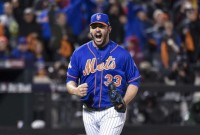
For all the rhetoric and rumors about the Mets possibly shopping Matt Harvey this offseason, we discovered there are 217 million reasons why it’s a bad idea. The cost of elite starting pitching is high on the free agent market.
David Price got that huge contract because he’s an ace. For his career, he’s 104-56 with a 3.09 ERA, 3.19 FIP, and a 126 ERA+. His average season is 16-9 with 34 starts, 227 IP, and 216 K. He’s won a Cy Young, and he was second in the voting last year after he went 18-5 with a 2.45 ERA, 161 ERA+, and a 2.78 FIP. By any measure, he’s an ace, and he’s getting paid accordingly.
The Red Sox needed an ace, so they paid a lot to get him. Remember their prior ace, Jon Lester, was traded to the A’s before he signed a free agent deal with the Cubs. The Red Sox got Yoenis Cespedes in the deal, who they flipped for Rick Porcello. They gave him a four year $82.5 million contract extension. Last year, which was year one of the deal, Porcello was 9-15 with a 4.92 ERA, 87 ERA+, and a 4.17 FIP. Not very good.
Essentially, the Red Sox turned their ace into a below league average pitcher. This happened because they got too cute. They really liked their chances to re-sign Lester so they traded him to bring another MLB player back. They should’ve just looked to lock up Lester, who reviewed a 6 year $155 million deal. The Cubs outbid the Red Sox by $22 million. The Red Sox 6 year $22 million offer was much higher than their previous four year $70 million offer before the Cespedes trade.
The end result was the Red Sox getting outbid for Lester, trading away the player they reviewed for Lester, and overpaying the pitcher they received for that player. Effectively, the Red Sox traded Lester for Porcello. It’s why they had to give such a huge contract to Price. They needed a top of the rotation starter. It’s a warning for the Mets.
Harvey is an ace. In his young career, he has a 144 ERA+ and a 2.65 FIP. Both numbers are better than Price, who just received $217 million. Also, Price has been noted as a poor postseason performer. After the World Series, we knew Harvey could rise to the challenge and be dominant when the Mets need him most.
This is not a guy you trade. Not even if he won’t work out a contract extension with you now. You don’t trade an ace like this because the return may very well become an overpaid Porcello. That’s even worse for the Mets because they don’t have the Red Sox financial wherewithal to overcome such a big mistake.
There may come a time Harvey leaves the Mets. That time better come when it’s clear the Mets can’t re-sign him and have no hopes of winning anything. I doubt that’ll be the case with this young rotation.
Harvey needs to stay because the price of his departure would be too high.

On the heels of the Tigers signing Jordan Zimermann, the team announced they are looking to improve the club regardless of the cost.
Naturally, I thought that would include Yoenis Cespedes. He hit .293/.323/.506 with 18 homeruns and 61 RBIs in 102 games for them last year. His play in LF was good enough to win him the Gold Glove. Assuming the team acquired Cameron Maybin to play center, they need a LF. Given his play with them last year coupled with his run with the Mets, you would think the Tigers would be hot after him.
Keep in mind, they apparently sought so highly of him, they would only trade him for a potential future ace. They were rumored to want to re-sign him if they couldn’t trade him. Arguably, Cespedes is the top corner outfielder on the market. Why aren’t any of his former teams interested in him? It’s stupefying.
I used to believe each time Cespedes was traded, he was being moved for a need and for a good player/prospect. At first, I dismissed the typical Boston smearing of one of their players out the door. Maybe there was more to it than we originally believed. While Cespedes had a great run, he showed a lot of quit and an alarming lack of hustle.
Cespedes has played for four teams in two years, and he’s probably on his way to playing for a fifth. There’s got to be a reason. I’ll always appreciate what he did for the Mets, but it appears the Mets are making the right decision letting him go.
Everyone else did.
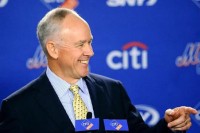
Here’s a question for you. If you had a GM that gave a bad contract to a 35 year old, forfeiting a pick in the process, and depleted it’s farm system of its top end starting pitching prospects for rentals, what would you call that GM? Apparently, you call Sandy Alderson the Executive of the Year.
Before proceeding, I’d like to note Alderson has generally done a good job with the Mets. The R.A. Dickey trade was a stroke of genius. However, that happened three years ago, and this is a 2015 award.
Alderson made two major league free agent signings for the 2015 season. The first was Michael Cuddyer. It was immediately panned by everyone. Alderson was out-maneuvered there by the Rockies of all organizations. With the Mets all but declaring they were signing David Wright‘s friend, the Rockies gave Cuddyer a qualifying offer. The Mets then gave Cuddyer a two year $21 million contract. Cuddyer was hurt, and he regressed as 35 year old players do. He’s now a $12.5 million bench player.
The other free agent deal was John Mayberry, Jr. Mayberry hit .164/.227/.318. He was released at the end of July. Overall, Alderson’s free agent acquisitions were complete busts.
His trades weren’t much better. Do you realize for a team touted with organizational starting pitching depth, Alderson depleted much of it. He traded eight minor league arms in total. For all the pitchers that were traded, Addison Reed is the only player the Mets could keep in 2016. By the way, Reed is a non-tender candidate.
Yes, the Mets made the World Series. They also lost it. For all the moves and sacrificing the future, the Mets still fell short. Further, it does not appear the moves generated enough revenue to sufficiently increase payroll. In the end, the Mets have up two big pitching prospects for rentals. If you’re saying it was worth it, I ask you if John Smoltz was worth it?
In 1987, Smoltz was traded for Doyle Alexander. Alexander went 9-0 with a 1.53 ERA for the Tigers. His fantastic run certainly mirrors the run Yoenis Cespedes had this year. Like the Mets, the Tigers won their division. Like the Mets, the Tigers didn’t win the World Series. The Tigers lost out on a Hall of Fame career. Time will only tell with Michael Fulmer. However, we do know he’s a highly rated prospect the Tigers believe can contribute very soon.
It’s the reason I said it was a bad trade from the beginning. It’s even worse when you consider the Tigers had to trade Cespedes because they were about to lose him for nothing.
Then there’s the issue of giving up another well regarded prospect in Casey Meisner for Tyler Clippard. Clippard was a rental. Yes, Clippard was terrific early on with the Mets, and he helped the Mets win the division. Addison Reed was even better, and the Mets obtained him for much less. Again, this was a bad trade.
No, Alderson won this award for his earlier work and the system built by Omar Minaya. Alderson weakened the farm system in 2015, and he may now need to trade away major league talent rather than minor leaguers to improve the team in 2016. After all his moves, the Mets still don’t have a shortstop. There may also be new holes in center and at second.
Alderson has had a good run here, but he was not good in 2015. He certainly wasn’t the best executive in 2015. Unfortunately, this should bear out in the oncoming years.
